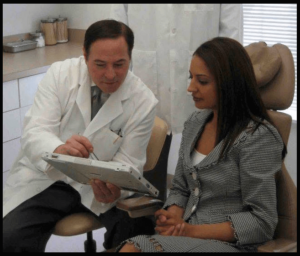
.
.
.
Please read the terms of service in our internet disclaimer to understand our terms and agreements first. When you have done so, you may proceed.
Some patients know precisely what concerns them and what areas they desire to have improved. Others are not sure. They just know they are concerned with general aging changes or that “tired” look. In either case, it is important for you and your doctor to have a clear understanding of the look you wish to achieve with surgery.
I like to start by pointing out to patients that beauty is really the symmetry, harmony, and proportion of one’s face. Cosmetic surgery is really divided into two areas but that they are related by this axiom. In one aspect, cosmetic surgery has to do with facial structures that are normal but because of the size and shape, are not proportional to the rest of the face. An example would be a nose with a large hump, a chin that is too recessed , or protruding ears. On the other hand, general aging changes may have thrown the face out of balance. Excess skin in the upper eyelids or sagging brows may make the eyes appear smaller and out of proportion. Laxity in the neck and jowl area may be making the face appear longer. Thus, as a first step, it is important for us to analyze one’s own face.
You can do this by standing in front of a mirror.
Facial Analysis
Vertical Proportion
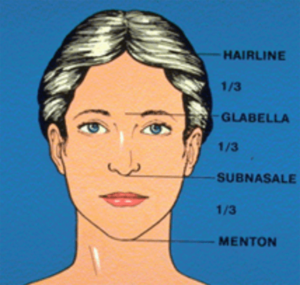
The face should be equal thirds in vertical height. A line drawn at the hairline, the eyebrows, at the base of the nose, and at the chin should divide the face into equal thirds.
If the upper third of the face is too long, it may be due to eyebrows sagging. This would be corrected with a endoscopic forehead or an eyebrow lift.
If the middle third of the face appears to be too long and out of proportion, it may be due to the nose being out of proportion. In this case, rhinoplasty may be indicated.
If the lower third of the face, from the nose to the chin, appears to be out of proportion, it may be due to changes in the nose, a receding chin, or excess fullness in the neck area, which makes it difficult to delineate the border of the chin. Nose surgery, chin implant surgery (mentoplasty), or surgery to contour the neck (submental lipectomy, necklift, or facelift) may be indicated.
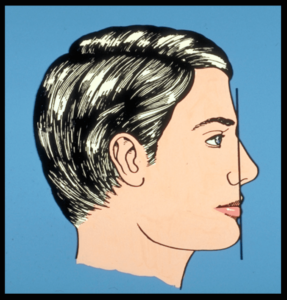
From the profile view, a vertical line dropped from the forehead should touch the upper lip and the chin.
If the chin is too recessed, this may indicate the need for a chin implant (mentoplasty). If the chin is too protruding, retrognathic surgery to bring the chin into proportion and provide better occlusion of the teeth may be indicated.
Horizontal Proportion
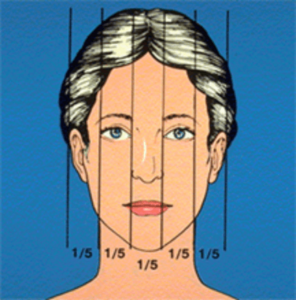
Horizontally, the face should be five eye lengths wide. The width of the nose should be the width of an eye.
Increased skin in the upper eyelids may actually cause the eyes to be smaller than normal. This results in the face appearing to be wider. Drooping or sagging eyebrows can also cause the eyes to appear to be reduced in size. When this occurs, upper lid blepharoplasty and /or brow elevation procedures may be indicated.
If the nose is wider than the width of an eye, nasal surgery to reduce the flaring of the nostrils or the fullness in the tip (rhinoplasty) may be advantageous.
As we age, our tissues tend to sag. Tissues that were once in the cheekbone area actually drop down into the jowl area, giving the face a wider, and possibly longer, appearance. When this occurs, facelift surgery (rhytidectomy) can help provide more proportion and symmetry to the face.
Proportion & Symmetry
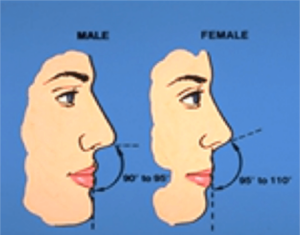
Proportion and symmetry is very important when analyzing the nose. Ideally, the distance from the tip of the nose to the base would equal the distance from the base of the nose to the upper lip. And the angle from the nose to the lip (nasolabial angle) would be between 100 – 103 degrees in men. There should be a smooth, gently sloping angle to the dorsum of the nose that serves to complement our other facial features.
Aging Process

The aging process varies from person to person. However, certain changes occur rather consistently at certain times in the aging process.
As we age, our skin loses elasticity, fat redistributes, muscles decrease in straight and tone and skin has more laxity. How we age depends upon a variety of factors. Environmental factors such as wind and sun exposure can play a significant roll in accelerating the aging process. “Heliodermatitis” is a medical term that indicates breakdown of the support structures in the skin secondary to excessive sun exposure. This can result in increased skin laxity and rhytids (wrinkling of the skin). Nutrition, general health, stress, and genetics all play an influential role in the aging process.
Age 25 – 30 upper lid blepharoplasty
Age 30 – 35 lower lid blepharoplasty
Age 38 – 45 facelift
Age 18 – 25 nasal surgery
Many people ask, “When is the best time for surgery?” There is actually no “wrong ” or “right” time to have surgery. Surgery needs to be done at a time that fits in well to one’s schedule, when one is comfortable with their surgeon and what is anticipated to be done at surgery, and at a time that fits in well to the finances.
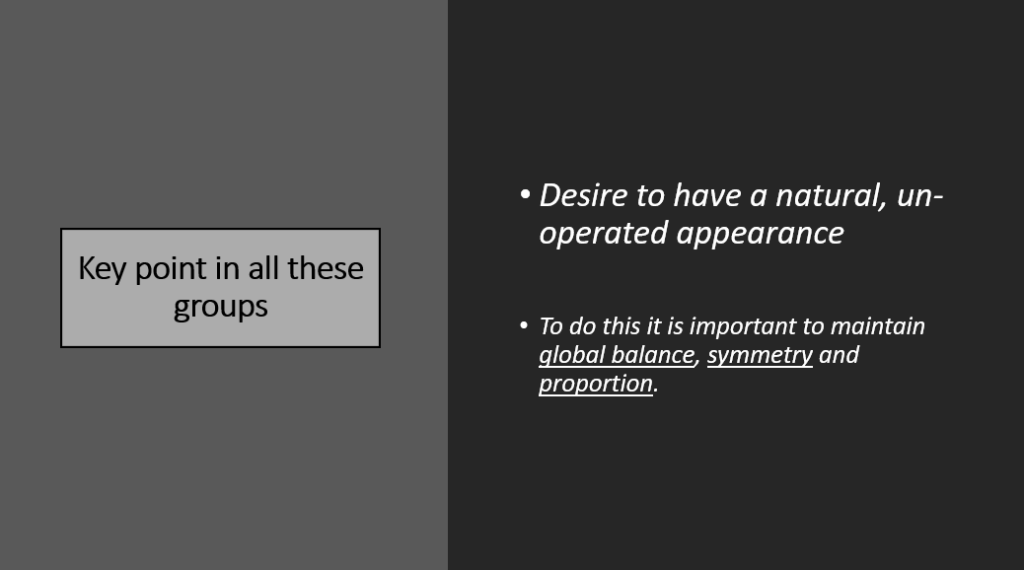
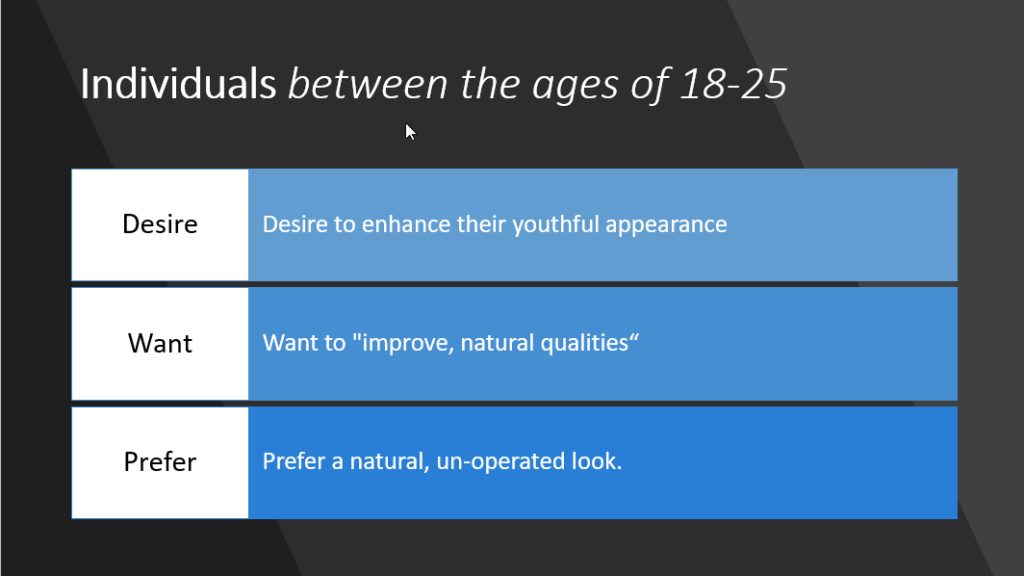
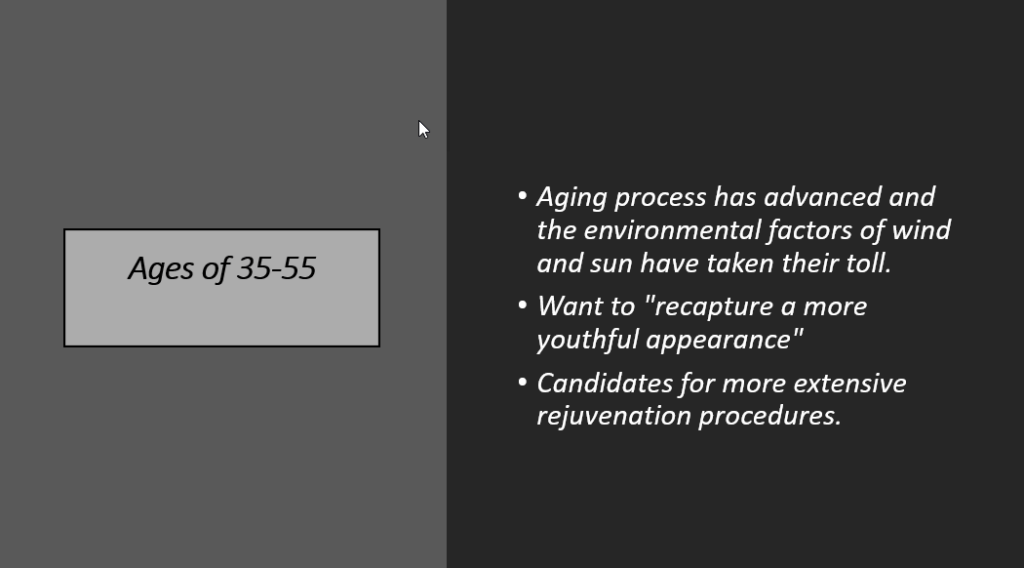
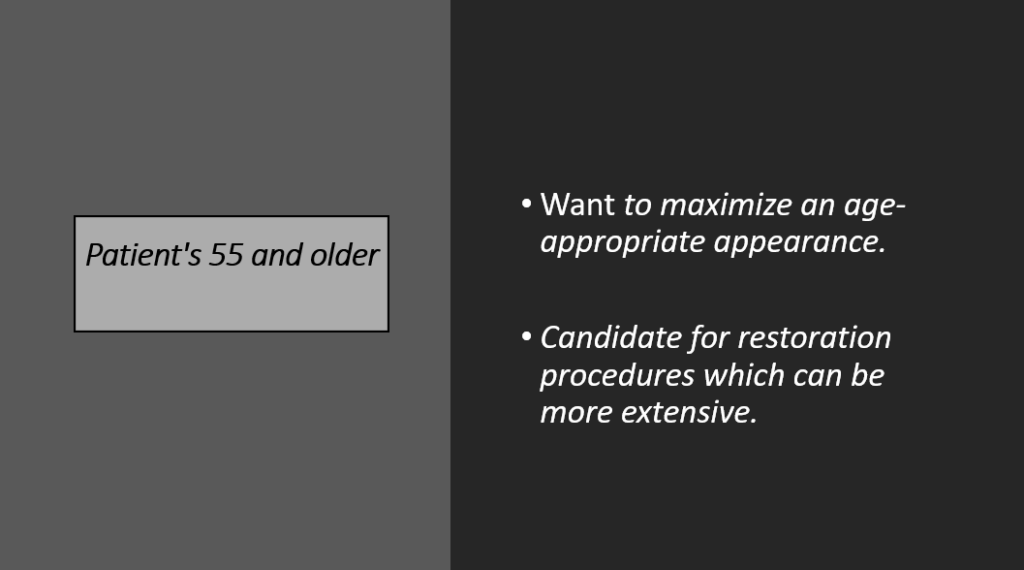
I tell patients that this should be “like going on a vacation”. It is something that you are doing for yourself, and is is actually an “investment” in yourself. It is something that you can enjoy and take advantage of every day.
Some individuals like to have surgery done early to maintain a rested , youthful, energetic appearance. The advantage of having things done early is that we’re able to enjoy the benefits of surgery longer and that we tend to heal more quickly and have a longer-lasting result when our tissues are in better physical condition. Often times, less extensive procedures can be done earlier in the aging process and provide significant aesthetic improvement while avoiding a more prolonged recovery time.

Other individuals choose to have surgery performed later in the aging process. This can be due to a variety of reasons, which includes family obligation, work and social schedule, and general time constraints. It is not uncommon to have individuals present who have concentrated on other areas of their life so intensely that they have neglected themselves. Now it is their turn. Newer anesthetic and surgical techniques allow these individuals to have a number of procedures performed in the same operative setting, which can dramatically reduce costs and overall recovery time. These individuals can often times obtain dramatic changes yet have a natural, un-operated appearance.
Whatever the reasons, it is important that the individual having surgery have it for their own reasons and not to please someone else. You need to focus on improving the areas that concern you.
Conditions
After analyzing your face and identifying which condition(s) you are concerned with, click on the recommendation(s) that are given to the right of each.
| CONDITION | RECOMMENDATION |
| Acne scars | Intense pulse dye laser |
| Bags under eyes | Lower blepharoplasty |
| Dark circles under the eyes | Lower lid transconjunctival Chemical peel |
| Drooping eyelids | Blepharoplasty Endoscopic forehead |
| Ears protrude too much | Otoplasty |
| Facial scars | Laser surgery |
| Frown lines | Botox Laser resurfacing Dermal fillers |
| Fullness in upper eyelids Makeup that is difficult to keep oneyelids | Upperlid blepharoplasty |
| Fine lines around the eyes Crows feet | Chemical peel Laser resurfacing Botox |
| Fine facial wrinkles Lines around the mouth | Laser resurfacing Chemical peel Dermal fillers |
| Fullness in neck Turkey gobbler neck | Necklift Facelift |
| Hair loss | Hair transplantation Hair restoration |
| Hump on nose Fullness in tip of nose Bulbosity of nose Crooked nose Nose too long or tip drooping | Nasal reconstructive surgery |
| Difficulty breathing | Septoplasty Turbinate resection |
| Jowls | Facelift S-lift |
| Receding chin | Chin implant |
| Thin lips | Lip implant |
| Tired look | Endoscopic forehead lift Facelift |
| Wrinkles in forehead | Botox Endoscopic forehead lift |
Summary
In order to fully evaluate a patient, a more detailed medical history and physical exam are needed. Many of our patients come from long distances. They find it helpful to provide much of the information required over the Internet to speed the evaluation scheduling process and to minimize travel time. While we obviously cannot perform a physical exam in this manner, evaluation of photographic images can be very important.
Individuals who desire facial surgery may obtain a more extensive evaluation and tentatively schedule surgery via our Internet site, The evaluation-consultation process is outlined below.
Evaluation Process- Phase I
1) On-line medical information profile is submitted for review by Dr. Beeson.
2) Photographs taken according to guidelines are submitted digitally or via Federal Express for physician review. Click here for “Instructions for Photographs”.
3) Time you desire to have surgery and a list of the procedures desired can be submitted.
4) Doctor responds to you via email or telephone to discuss your concerns in more detail and to tentatively outline a treatment plan.
Evaluation Process- Phase II
1) Surgery date is established
2) Pre-surgery contact is made by staff to supply additional information and instructions
3) Pre-surgery patients obtain a physical exam, medical clearance, and pre-operative laboratory tests from a primary care doctor in your area at least two weeks prior to surgery
4) Patients are seen in our office for a personal consultation, exam, and final pre-operative evaluation that afternoon before your schedule surgery. If you and Dr. Beeson agree, the surgery proceeds as scheduled the following day.
Most patients remain overnight the day of surgery in our recovery care suites. The day following surgery, our staff can arrange for care and accommodations as desired.
Disclaimer
As a condition of participating in this consultation, I acknowledge that the information provided may not be completely confidential because of use of the Internet. I authorize the Internet as a means of communication to me in this regard, and accept the afore noted confidentiality risks. I attest that the information provided is correct and accurate. I realize that I am not establishing a physician relationship by means of this consultation process, but am using it only as an educational tool. I feel that a doctor-patient relationship cannot be established without my meeting face-to-face with the doctor and without myself and the doctor mutually agreeing to establish such a relationship. Should any disputes arise, I would recognize Indiana as the domicile for resolution of such disputes and would accept that Indian statutes would govern resolution of such disputes.
Schedule a Consultation
Communication is not secure. Contacting the practice does not establish a physician/ patient relationship.*